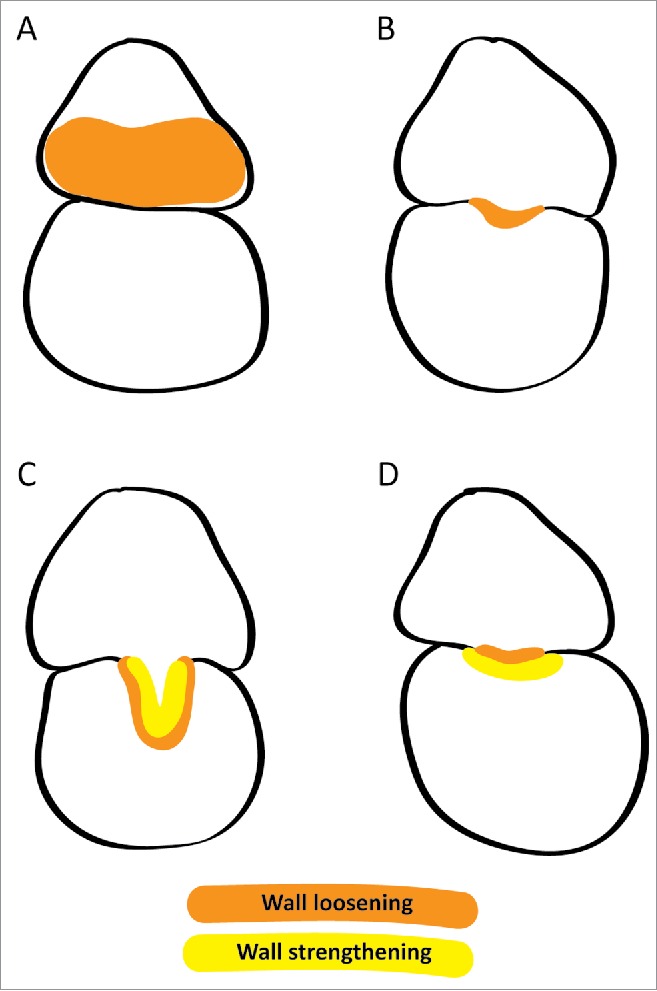Figure 2.

Hypothetical functions of XTHs in the parasitization strategy employed by Cuscuta and in the resistance mechanism of cultivated tomato. Illustrated are cross-sections of infection sites when Cuscuta (upper) infects a potential host plant (lower). Orange and yellow signify wall loosening and strengthening activities of XTHs, respectively. (A) At the onset of haustorium development, the swelling of the parasite stem facing the host plant is facilitated by Cuscuta XTHs that promote expansive cell growth through wall loosening. (B) As the haustorium begins its host-invasive growth, XTHs secreted from the infection organ aid tissue penetration by loosening host cell walls. (C) Upon reaching the vascular bundles of its host, the cell wall loosening activity of Cuscuta XTHs at the host-parasite interface enables parasite feeding through apoplastic sugar transfer and/or by promoting vascular tissue differentiation. To prevent exaggerated cell wall loosening under low turgor pressure, Cuscuta XTHs must also strengthen its own walls. (D) When Cuscuta attempts to invade cultivated tomato by deploying wall loosening XTHs at the interface, the counteractive wall strengthening activity of host-encoded XTHs (yellow area) prevents the haustorium from entering the host plant.
